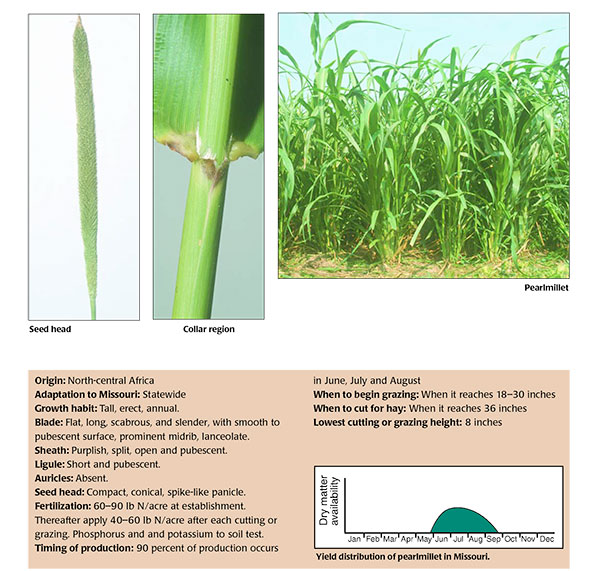Taking an environmentally sensitive approach to pest management
Forage of the Month: Pearlmillet
(Pennisetum americanum (L.) Leeke)
Published: July 17, 2012
Pearlmillet is an annual warm-season grass that produces most of its forage during midsummer. Other millets, such as proso, foxtail, Japanese or German, are often used in silage or hay mixtures, but they produce less forage and have a shorter grazing season than pearlmillet. Pearlmillet is an excellent choice for warm-season pasture in the Ozarks because it tolerates acidic soils and drought. Pearlmillet can produce 8,000 to 12,000 lb/acre of forage when harvested to a 6- to 10-inch stubble after accumulated growth reaches a height of 18 to 30 inches. Unlike sorghum-sudangrass, it does not contain prussic acid. It responds well to split applications of nitrogen at establishment and then again after the first grazing. Pearlmillet is a nitrate accumulator when water is lacking. It should be tested for nitrate levels before grazing during or immediately after a drought.

Subscribe to receive similar articles sent directly to your inbox!
REVISED: October 1, 2015